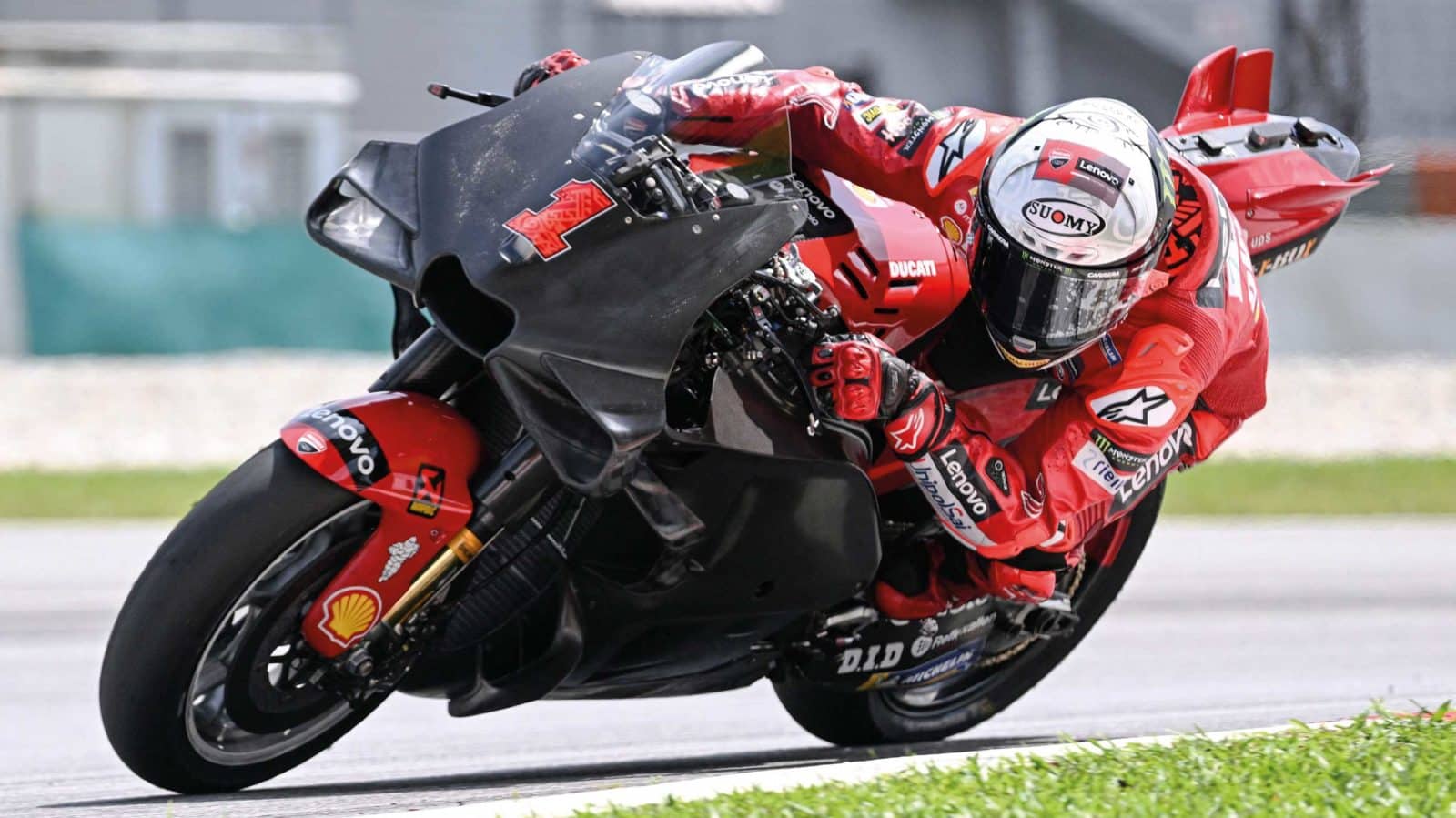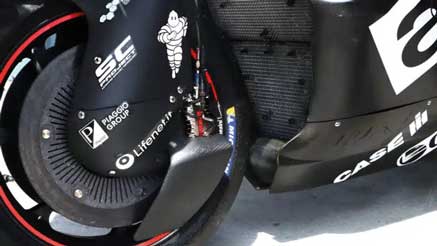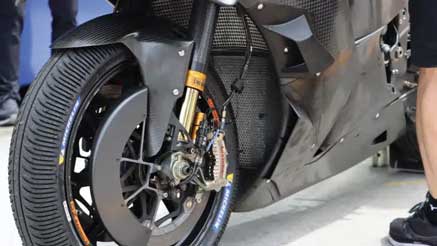MotoGP gets to grips with F1-inspired ground effects
All five factory MotoGP teams are now using ground-effect aerodynamics

Reigning MotoGP champion Francesco Bagnaia tests the aero of his Ducati at Sepang
Getty images
The age of aero has arrived in MotoGP. During testing in Sepang in February it became clear that for the first time all five factory teams now featured the technology on their machines.
The adoption of Formula 1-inspired ground-effect aerodynamics will be a key feature of the coming season – with those teams that master it potentially seeing rich rewards. Its appearance has also led to a run on engineers with experience of aerodynamics from other disciplines – notably Formula 1.
Aero in itself is not new to MotoGP. Ducati was an early adopter two years ago with a new ground-effect diffuser fairing that increased grip for better turning. Aprilia followed midway through last season with a non-diffuser ground-effect fairing, then Honda added diffusers to its RC213V for the last few races. Now KTM and Yamaha have joined in, unveiling their first ground-effect diffuser fairings at Sepang.

Aprilia tested small front wheel aero attachments
How does this technology, pioneered 50 years ago in F1, work on bikes? First, teams must design the bodywork to accelerate the airflow between the fairing and the ground at full lean. This creates a low-pressure area, so the atmospheric pressure pushes the motorcycle into the asphalt, increasing grip.
The more grip the bike has the faster it can turn in the corner, and the faster it does that the sooner the rider can lift the bike onto the fatter part of the rear tyre and accelerate.

Yamaha was the last team to join the ground-effect race
According to Motor Sport’s MotoGP correspondent Mat Oxley, Ducati and Aprilia currently lead the aero race because they’ve hired F1 aerodynamicists, mostly from Ferrari – which knows much more about aero than anyone in MotoGP, even though it needs to apply its know-how very differently to the dynamics of motorcycles.
Red Bull-backed KTM is using aerodynamicists from Red Bull F1’s team to catch up. Honda has car aero experience, from F1 and GT racing while Yamaha is now looking to hire F1 aero people.
